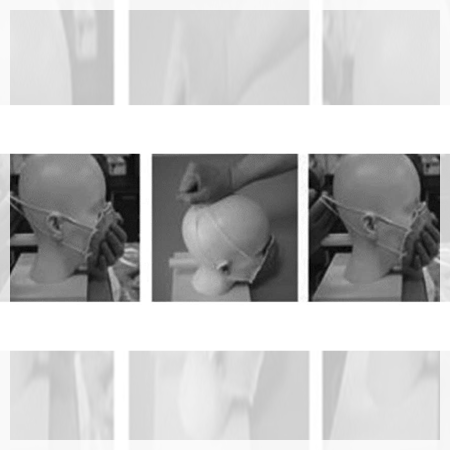Currency
January 25, 2018

The importance of covering a cough or a sneeze to prevent spreading germs to those around us, often using the crook of an elbow, is something that most of us learned before starting school. Healthcare providers typically wear personal protective equipment, such as the filtering facepiece respirator, to protect both themselves and their patients. However, whether or not this equipment can be reused and still provide the necessary protection is a complicated issue.
During an epidemic, personal protective equipment for healthcare providers can mean the difference between containing the disease and spreading it further. Chief among this kind of equipment is the NIOSH-approved N95 filtering facepiece respirator, which covers the mouth and nose to filter out viruses and other harmful substances. In normal circumstances, filtering facepiece respirators are disposable. In the event of a severe epidemic, however, respirator demand could outpace supply, potentially requiring healthcare providers to reuse them. One problem with reusing a respirator is the viruses and other harmful substances that it captures can be transferred to the user’s hands when putting the respirator on and taking it off, or donning and doffing.

To test the likelihood of contamination, NIOSH scientists measured virus levels on the hands after donning and doffing filtering facepiece respirators in different scenarios simulating contamination with a cough or sneeze. In the laboratory, they combined bacteriophage MS2—a virus that is harmless to people—with fluorescein dye to form airborne and evaporated droplets. They then observed 13 volunteers perform three scenarios: improper doffing, proper doffing and reuse, and improper doffing and reuse of filtering facepiece respirators using a head form. For each scenario, they measured the levels of virus on the hands of the volunteers aged between 18 and 60 years old.
On average, the scientists detected about 8%–15% of the virus droplets had transferred from the respirators to the hands of the volunteers after donning and doffing the filtering facepiece respirators on and off the head form. Compared to proper doffing and reuse and improper doffing without reuse, improper doffing combined with reuse resulted in more viruses transferred. These results support the recommendations from the Centers for Disease Control and Prevention (CDC) for the proper removal of filtering facepiece respirators. In addition, they highlight the importance of discarding used filtering facepiece respirators after direct contamination by a cough or a sneeze. The study appeared in the Journal of Occupational and Environmental Hygiene.
During an epidemic, personal protective equipment for healthcare providers can mean the difference between containing the disease and spreading it further. Chief among this kind of equipment is the NIOSH-approved N95 filtering facepiece respirator, which covers the mouth and nose to filter out viruses and other harmful substances. In normal circumstances, filtering facepiece respirators are disposable. In the event of a severe epidemic, however, respirator demand could outpace supply, potentially requiring healthcare providers to reuse them. One problem with reusing a respirator is the viruses and other harmful substances that it captures can be transferred to the user’s hands when putting the respirator on and taking it off, or donning and doffing.

To test the likelihood of contamination, NIOSH scientists measured virus levels on the hands after donning and doffing filtering facepiece respirators in different scenarios simulating contamination with a cough or sneeze. In the laboratory, they combined bacteriophage MS2—a virus that is harmless to people—with fluorescein dye to form airborne and evaporated droplets. They then observed 13 volunteers perform three scenarios: improper doffing, proper doffing and reuse, and improper doffing and reuse of filtering facepiece respirators using a head form. For each scenario, they measured the levels of virus on the hands of the volunteers aged between 18 and 60 years old.
On average, the scientists detected about 8%–15% of the virus droplets had transferred from the respirators to the hands of the volunteers after donning and doffing the filtering facepiece respirators on and off the head form. Compared to proper doffing and reuse and improper doffing without reuse, improper doffing combined with reuse resulted in more viruses transferred. These results support the recommendations from the Centers for Disease Control and Prevention (CDC) for the proper removal of filtering facepiece respirators. In addition, they highlight the importance of discarding used filtering facepiece respirators after direct contamination by a cough or a sneeze. The study appeared in the Journal of Occupational and Environmental Hygiene.









